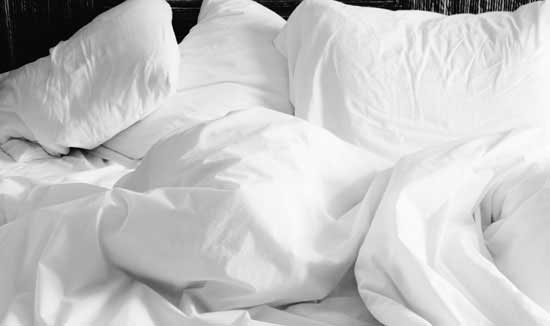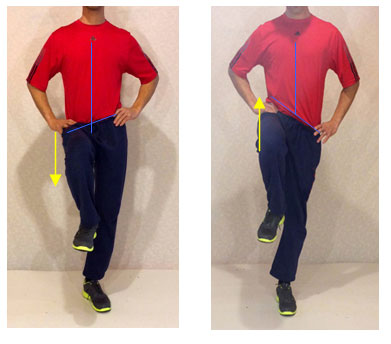
Relieve your morning stiffness with this simple exercise
By Sherwin Nicholson | May 1, 2020
The Standing Hip Shift exercise will get you moving again and with less pain
To go straight to the exercise, please scroll/swipe down.
Are you flexible just before bed but really stiff in the morning?
The problem can be that what you’ve been doing during your day, fatigues and wears your joints, muscles and discs. When this happens, your body’s natural endorphins then kick in to help relieve the pain. However, as the numbing effect wears off overnight, you begin to hurt again and become stiff.
What we don’t realize is that weak and tight muscles are always in a fatigued and sore state.
The chronic pain will also cause them to tighten further, causing you to feel very stiff, affecting your quality of sleep. Although there may be other reasons such as the quality of your mattress, sleep position, body weight and more, this is the main problem likely affecting you now.
The Standing Hip Shift is the ideal solution for morning stiffness
This site can show you many great reconditioning movements that you should be performing to help you with your morning stiffness. They’ll relieve both the tightness and imbalances that the lower back and hip muscles have developed from fatigue.
Pain in your back may also be coming from your hips. You may think that exercises just for your back may target all of the soreness. But if the hips aren’t looked after, the discomfort won’t go away.
The Standing Hip Shift is the ideal solution for morning stiffness
It is illustrated below from #8 from the Challenging Exercises (See Table of Contents).
It help you by:
- Encouraging your gluteus maximus to contract (for hip mobility and support).
- Strengthening your gluteus medius (for hip mobility, reduce hip stiffness).
- Stretching both the deep muscles of the spine and back (reduces low back stiffness).
- Strengthens the abdominals (reduces excessive anterior pelvic tilt).
First, perform this shift before going to bed (standing) and while in bed (lying sideways) but before rising. (It is important to have consent from your family doctor before any exercise routine such as the Standing Hip Shift.)
Standing Hip Shift
Step 1: Stand upright, raise one leg and hold it up unassisted. Allow the unsupported hip to drop.

Step 2: Raise the elevated and unsupported side of the hip by flexing the standing hip. Raise in a slow and controlled fashion as high as possible. Your hip should be raised from below the level position to above level.
Step 3: Hold the contraction and keep your hip raised for 1-10 seconds.
Step 4: Return to a rest position.
Step 5: Repeat with the other leg and hip.
Step 6: Repeat this entire shift but now with a forward lean. Contract your abdominals and hold 1- 10 seconds.
This is a tough exercise to perform initially, so it is better to perform it while lying down on your bed or the floor. Your initial stiffness you prevent you from fully executing the movement but should improve over time. When standing, remain near a support to keep yourself from falling, until your balance improves.
It is important to shift your hips with respect to the blue axis lines indicated in the images above. Tight and stiff hip muscles make this movement very difficult. At first, you may only be able to shift a very slight amount.
With practice and increased strength and flexibility, you will be able to shift your hips with greater degrees of motion.
If you are tired of enduring this form of chronic pain, and are in need of a proven, structured, plan for relief: Search this site for more valuable help and download the 4 stage eBook to start today. I have been able to help thousands of people with pain and I provide email support. If you are ready to learn how to do it, I can help you. – Sherwin
All unedited reviews and testimonials
“I wanted to let you know that your program has made me have unbelievable breakthroughs and in only two days. I now realize that my pelvis has been tilting back and up as well as to the right side. Your hip unlocking exercises in particular made me feel something I forgot I could feel. I’m 22 and was having a lot of spinal issues and joint pain which was causing immobilizing suffering but this has already made me have unbelievable relief and hope. You’re a real life saver”
“This book is a lifesaver for anybody with chronic lower back pain. I have suffered for 6-7 years and nothing I tried (physical therapy, yoga, swimming) provides any meaningful lasting relief. Found this book about 10 days ago and have been following the exercises in this book; it is like magic and I have been pain free for the last week. After many years, I am sleeping well at night and wake up energized and ready to take on the day.”
References:
- Strength Training Anatomy – Frederic Delavier. 2006. QM151.D454. 2nd edition. Human Kinetics Publishing.
- www.back.com
- Acute pain-Diagnosis and treatment of acute lbp.Casazza BA1.-http://www.ncbi.nlm.nih.gov/pubmedhealth/PMH0004668/
- Early Management of Persistent Non-specific LBP. NICE Clinical Guidelines, No. 88 http://www.ncbi.nlm.nih.gov/pubmedhealth/PMH0005442/
- Effects of stabilization exercises on health-related quality of life in women with chronic lbp.-http://www.ncbi.nlm.nih.gov/pubmed/24184617
